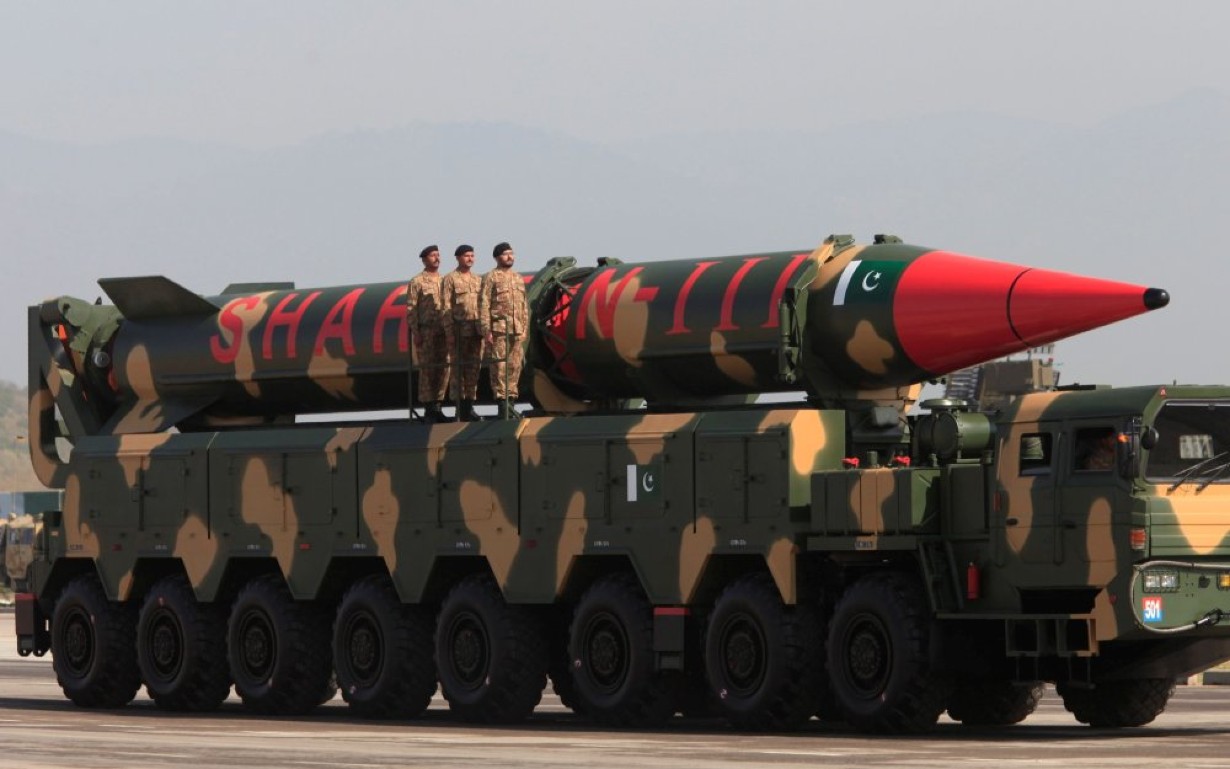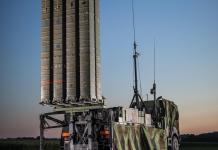Among the acknowledged nuclear weapon states, Pakistan remains at the forefront primarily because Islamabad is also recognized as a nation that practices terrorism as a state policy.
Ever since Pakistan acquired nuclear weapons, the possibility/threat of a nuclear weapon landing in the hands of terrorists has been discussed around the globe, India in particular.
The reason is apparent; Pakistan has openly admitted that its nukes are aimed toward India. Such statements worded differently have been made from time to time by Pakistani Presidents, Prime Ministers, Cabinet Ministers, and, more importantly, by known terror outfits.
Undoubtedly, it is a serious but not an existential threat to India. The need, however, is to examine whether a terror outfit in Pakistan can acquire a nuclear weapon from Pakistan’s arsenal. Before proceeding any further, it would be relevant to state how a nuclear weapon is stored during peacetime explicitly.
Nukes are not akin to hand grenades, wherein only a pin needs to be pulled out to activate the weapon. Nukes cannot be activated because someone has got hold of it.
One of the most important incidents involving the theft of radioactive material was the theft of Cobalt-60 in Chechneya in 1999. Chechen rebels successfully hijacked a truck carrying Cobalt-60 in Mexico City. Fortunately, they could not use it and cause any significant damage.
Nuclear Weapons
Most, instead all, nuclear weapons of all nations, including North Korea, have inherent safety features for their protection. A country cannot allow its nuke to blow up while in storage, transported, or mated to launch platforms.
Without going into technical details, it would suffice to mention that each nuke has at least four stages of protection. Hence even if the first three stages are breached either due to error or deliberately, the fourth stage will still ensure that the nuke does not explode. These stages are:
- All nukes, without exception, have a primary safety feature called ‘Permissive Action Links (PAL).’ An authorized code must be fed into the circuit to activate the nuke. In fact, according to the latest information, if the PAL has not been fed correctly in the first instance, the weapon becomes inoperable.
- In some cases, nukes are already pre-programmed for certain pre-determined targets. These nukes will only detonate when the nuke has completed its pre-programmed flight/distance.
- Software for activation of a nuke is/may also be programmed to take into account certain specific sequences of events before exploding. Such events could be changes in environmental conditions viz changes in pressure, temperature, and density. An ordinary pressure switch activated nukes over Hiroshima and Nagasaki. Unless the specified and programmed conditions are met nuke does not arm itself, hence would not explode.
- And finally, the ‘source code.’ Until the ‘source code’ is fed into the system, the launch platform will not be activated. For instance, countries having SSMs of various ranges and with a nuke in position cannot be launched even inadvertently by operators unless the ‘source code’ has been told to them. US Presidents’ Football’ and Indian PM’s ‘Brief Case’ carries the ‘Source Code.’ There is yet another layer of protection in the event of ‘Football’ or ‘Brief Case’ being misplaced or stolen. There is a multi-layered authentication process before the nuke controlling authority can order launch.
- Availability of the launch platform will always remain the biggest hindrance. A nuke can not be thrown out of the window of a speeding car. An attack over any Indian location will need a launch platform, an aircraft, or an SSM. It is well nigh impossible that terror outfits will have the capability/connection to manage a platform ready to launch. It happens only in James Bond movies. Because launch platform readiness/availability can only be accomplished if the state support is there, in that case, it would no longer be an act of terror. It would be an act of aggression by the state of Pakistan.
The above facts, in simple words, have been mentioned to enunciate and highlight the fact that a nuke cannot be activated even if a terror outfit has been able to steal it. Therefore a terror outfit of Pakistan carrying out a live nuke attack within Indian territory is a remote possibility.
Radiological Terrorism
Most Indian military strategists invariably talk about nuclear terrorism, more often than not implying a terror outfit exploding a nuclear weapon.
As stated above, it is a remote possibility. However, the chances of Pakistan’s military colluding with a terror outfit and launching an SSM or an aircraft with a live nuke cannot be ruled out, keeping in view the fundamentalism injected into Pakistan’s military during the Zia regime.
But as stated earlier, it would essentially imply direct involvement of the state of Pakistan.

However, what is of extreme significance is the probability of Radiological terrorism. Worldwide there have been numerous cases of theft of radioactive materials.
Fortunately, at least as yet, none of these deliberate and accidental events of radioactive material in the wrong hands has resulted in any catastrophe. An attack against any state is yet to happen.
Before discussing intentional radiological terrorism, it would be more appropriate to discuss accidental radiological disasters. Petty thieves broke into an abandoned medical facility in Brazil and picked up a canister from a radio teletherapy machine without knowing its contents, among other things. The canister contained an isotope of Cesium 137 in powdered form, a highly radioactive substance.
Without knowing the contents, they dumped the canister in a garbage bin. The canister was opened inadvertently/deliberately, resulting in highly radioactive Cesium powder dispersing in the neighborhood aided by favorable winds. For more than a few hundred people, the effects of contamination and clean-up cost exceeded USD 20 million.
Exploding a nuclear weapon is a complex process. However, getting hold of radioactive materials is probably much easier. The consequences of a nuclear explosion are instantaneous.
However, radiological terrorism is far easier and simpler to execute without leaving a trace. There are two means of radiological terrorism. One is by way of a radiological dispersal device (RDD), and the other is a radiological exposure device (RED).
RDD method of terrorism can be executed by spreading the radioactive material deliberately in and around the target area. Dispersal can be accomplished in total secrecy.
Dropping the radioactive material in a large water body or spreading the powdered form in thickly populated localities can and would cause catastrophic effects. Similarly, RED can also be used to cause long-term adverse effects. RDD and RED are considered and can be employed as ‘weapons of mass disruption.’
Status Of Pakistan Nukes
The possibility of a terror outfit of Pakistan stealing a nuke is far less remote than the chances of a ‘loose nuke’ finding its way into the hands of terrorists due to ‘insiders’ connivance with terror outfits.
The Islamisation of the Pakistan military is the biggest threat, which might result in nukes falling into the wrong hands.
Top military officials have openly talked about their religious fundamentalist views. These religious extremists holding important positions in the Pakistan military might become the facilitators.
Building even a Hiroshima-type bomb would involve considerable administrative and technological effort, which cannot remain hidden from the eyes of snooping satellites and other intelligence outfits.

Terror and nukes have been loosely used to indicate their association. Notwithstanding utterances of leaders of various terror outfits in Pakistan, the only credible terror outfit with a clearly defined aim was Al Qaeda, led by Osama Bin Laden.
Al Qaeda had vowed to kill millions of Americans, for which he considered it to be his religious duty to steal/purchase/produce a nuke and use it on an American city.
Al Qaeda had even contacted AQ Khan laboratory facility KRL to procure radioactive material, but the matter did not fructify for unknown reasons.
Pakistan’s Nuclear Arsenal
IAEA constituted an international panel on fissile material estimates that Pakistan has created about 4,000 kilograms of weapons-grade Uranium (90% plus enrichment), called Highly Enriched Uranium (HEU), and about 400 kilograms of weapon-grade Plutonium.
Hiroshima/Nagasaki nukes require about 12 to 15 kilograms of HEU or 5 to 6 kilograms of Plutonium.
Future
Pakistan’s hatred towards India drives successive Pakistani leadership to invest in the ever-increasing nuclear program. The creation of new reactors and the continued production of new warheads has a considerable cost.
Pakistan’s economy is in tatters. Chinese financial support may not be able to sustain the drowning Pakistani economy.
Pakistan wants to become a nation with ‘Full Spectrum Nuclear Deterrence.’ In its blind and unaffordable quest for nuclear supremacy over India, Pakistan continues to invest billions to increase its nuclear arsenal, not realizing that protecting the most potent weapon might become its most significant liability in the foreseeable future.
Terrorism as its state policy might, instead, will come to haunt future Pakistani generations. Homegrown terrorists might acquire and accidentally explode the nuke within Pakistan. A Pakistan-aided terrorist outfit cannot carry out a nuke explosion in India. However, radiological terrorism is a distinct possibility.
Pakistan’s nuclear arsenal is not an existential threat to India, but India’s nuclear capability will remain a highly potent threat to the existence of Pakistan.
Therefore it would be more in the interest of Pakistan to ensure that its nukes do not fall into the wrong hands.
Security of Pakistan’s nukes in the interest of Pakistan is more relevant for Islamabad than India. Let Indian military strategists not create hype of Pakistani nukes falling into the hands of terrorists.
- Gp Cpt TP Srivastava (Retd) is an ex-NDA who flew MiG-21 and 29. He is a qualified flying instructor. He commanded the MiG-21 squadron. He is a directing staff at DSSC Wellington and chief instructor at the College of Air Warfare. VIEWS PERSONAL
- Follow EurAsian Times on Google News




